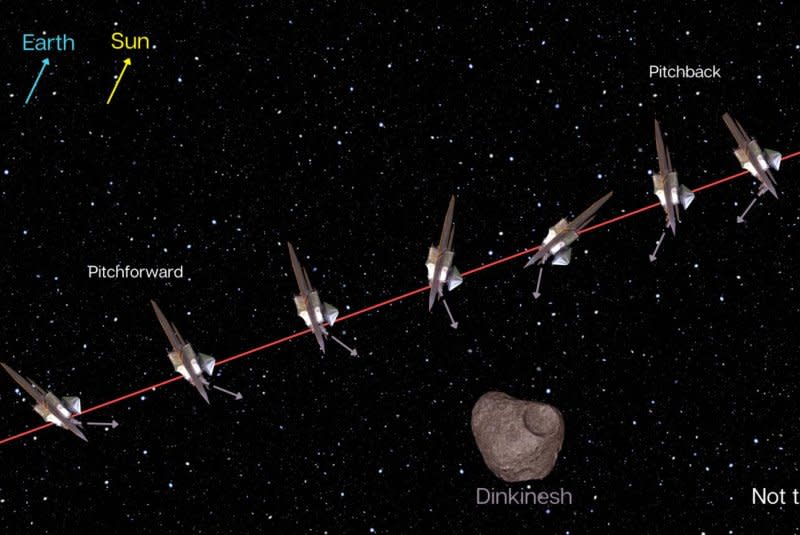NASA's Lucy spacecraft competes first asteroid flyby

Nov. 2 (UPI) -- NASA's Lucy spacecraft completed its first flyby of an asteroid Wednesday and "phoned home" by transmitting data back to Earth.
The asteroid, named Dinkinesh, is the first of eight asteroids Lucy will observe during its mission.
"Based on information received, the team has determined that the spacecraft is in good health and the team has commanded the spacecraft to start downlinking data collected during the encounter," NASA said in a press release Wednesday.
According to NASA, Lucy passed by Dinkinesh at 10,000 mph at a distance of about 270 miles.
"Hello Lucy! The spacecraft phoned home and is healthy. Now the engineers will command Lucy to send science data from the Dinkinesh encounter to Earth. This data downlink will take several days," NASA Solar System posted to X Wednesday.

Lucy uses a system called a terminal tracking system to observe the asteroid while the spacecraft's instrument pointing platform is designed to adjust the orientation of Lucy and the instruments onboard to observe Dinkinesh.
Prior to the flyby, the spacecraft was set to "encounter configuration" which prepared Lucy and the instrument pointing platform to move in order to perform the best possible observation of Dinkinesh at high speed.
The orientation of the spacecraft while it is was in "encounter configuration" prevents the Lucy from transmitting data while it was observing Dinkinesh.
Lucy's Long Range Reconnaissance Imager was set to take a series of images of Dinkinesh and its Lucy Thermal Emission Spectrometer was set to be tested to see if it is able to take readings on the asteroid's temperature.
"It will take up to a week for all the data collected during the encounter to be downlinked to Earth," NASA said.
The flyby is being used as a test for the mission, whose main goal is to observe the Jupiter Trojan asteroids, which orbit the sun in a pattern similar to that of the plant Jupiter.
NASA hopes the mission will offer insight into the origins of the solar system as the Trojan Asteroids are believed to be left over matter from the solar system's creation.

